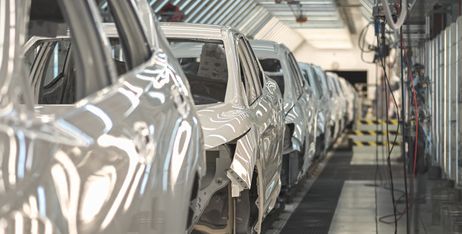The semiconductors shortage remained the main factor limiting EU passenger car production and sales in 2022, especially during the first half of the year, the European Automotive Manufacturers Association (ACEA) said on Tuesday February 7.The automotive industry is one of the largest consumers of steel, consuming about 12-15% of the global steel production, according to the World Steel Association (Worldsteel).
On average, a car contains around 820-1,134 kg of steel that is used for the car body, chassis, engine, transmission, and other components, depending on the type of vehicle and the manufacturing process.
Production
EU car production increased in the second half of 2022, which contributed to a year-on-year growth of 7.1%, totaling 10,769,893 units produced.
All major car producing countries in the EU reported growth, except Slovakia, with Germany leading the way with a 13.2% increase compared to 2021.
Central European markets, such as Romania, the Czech Republic, and Hungary, provided a strong boost to the region’s positive performance.
Despite the year-on-year growth, the 2022 figures were in line with those registered in 2020, when the industry was affected by Covid-19 lockdowns. The overall EU production output last year was still 24% lower than the 2019 pre-pandemic levels.
Passenger cars accounted for 82% of all vehicles manufactured in the EU, according to ACEA.
There are 134 car assembly plants in Europe, of which around 80 are in the EU.
New car sales
EU new car sales fell for the third consecutive year and reached the lowest level since 1993, amid a challenging economic environment and component shortages. In total, 9.3 million new units were sold in 2022.
Sales declined year on year in three of the EU’s four largest automotive markets: Italy (-9.7%), France (-7.8%), and Spain (-5.4%). Germany was the only exception, with a modest increase of 1.1%.
New car registrations in the EU are expected to rise by around 5% in 2023, putting registration volumes on par with 2020. Even if that level is achieved, total car registrations would still be lower than the 13 million units of 2019.
“Despite the many uncertainties ahead, the market should start embarking on a recovery process in 2023,” ACEA director general Sigrid de Vries said on January 31.
“We expect around 9.8 million new cars to be sold across the region this year, up 5% from 2022. However, this remains 25% below the 2019 pre-crisis levels, showing that we are still in a fragile situation,” she added.
Impact on the finished steel market
European hot-rolled coil prices have been under pressure due to weak automotive demand and overstocking during the second half of 2022.
The war in Ukraine has flustered the European steel market, and caused a wave of a panic buying in February-March 2022, with prices for flat and long steel reaching new historical peaks and breaking records set in the 2021 European summer.
Fastmarkets’ calculation of its daily steel hot-rolled coil index domestic, exw Northern Europe averaged €1,278.50 per tonne in March 2022, up by €326.49 per tonne month on month from €952.01 per tonne in February, and up by €489.60 per tonne year on year from €788.90 per tonne.
HRC prices began falling from April 2022 until the year-end, however, due to slowing automotive demand and competitive import offers. Automotive output in the EU has been in decline since because of acute component shortages and lack of consumer confidence caused by the energy crisis and recession concerns, sources said.
Fastmarkets’ calculation of its daily steel hot-rolled coil index domestic, exw Northern Europe averaged €642.73 in December 2022, up by €8.37 per tonne month on month from €634.36 per tonne in November and down by €273.67 per tonne year on year from €916.40 per tonne.
The demand for steel from the automotive industry has improved slightly in 2023 mainly due to a backlog of automotive orders, several sources said.
The 2023 outlook for the industry is discouraging, however. Eurofer expected the automotive sector output to have recovered by 2.7% in 2022, but this would mostly be a rebound from the low comparison base in 2021 due to a components shortage that year.
The sector was expected to return to growth in 2023, albeit very moderately (+1.1%), according to Eurofer.
Impact on scrap marketsThe year-on-year increase of car production in the EU boosted E8 scrap supply and pressured prices. Meanwhile, E3 scrap prices are on the rise due to reduced investments in the construction sector and, therefore, fewer demolition projects, from which E3 scrap is generated.
As a result, the spread between E8 and E3 scrap has narrowed to €10-15 per tonne in January from €15-20 per tonne in December. In January 2022, when car production in the EU was falling, the premium of E8 over E3 scrap was €70 per tonne in Germany, the region’s biggest car producer.
Pricing history
Steel scrap E8 thin new production steel domestic, delivered consumer Germany
Steel scrap HMS 1&2 (80:20 mix), Northern Europe origin, cfr Turkey

Published by: Julia Bolotova, Elina Virchenko






